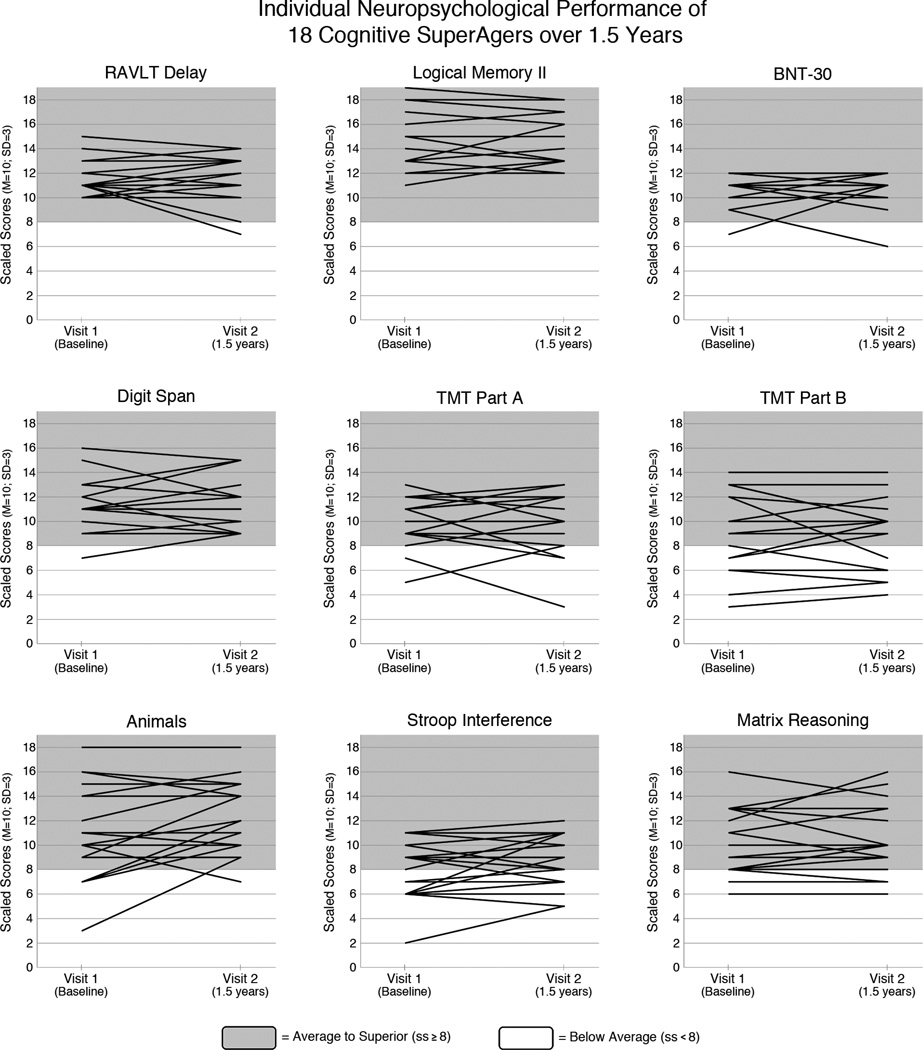Figure 1.
Individual neuropsychological performance scores for all measures are shown at baseline and at 18-month follow-up. Raw scores were converted to scaled scores (ss; mean = 10; standard deviation = 3) based on normative values for individuals in their 50s and 60s1, 3–5, 9–11. Shading indicates performance levels (when converted to scaled scores based on younger norms) of above average (grey, scaled score ≥8) or below average (white, scale score <8). Spaghetti plots demonstrate that the majority of SuperAgers demonstrate generally intact cognitive scores after an 18-month period when using younger norms. Note: Memory tasks include the RAVLT Delayed Recall portion and Logical Memory II subtest of the Wechsler Memory Scale-III; language tasks include the 30-item Boston Naming Test (“BNT-30”), and Category Fluency (“Animals”); measures of attention include the Digit Span subtest of the Wechsler Adult Intelligence Scale-III, and the Trail-Making Test Part-A (“TMT Part A”); and measures of executive functioning include the interference subtest of the Stroop task (“Stroop Interference”), the Trail-Making Test Part-B (“TMT Part B”), and the Matrix Reasoning (“Matrix Reasoning”) subtest of the Wechsler Adult Intelligence Scale-III.

